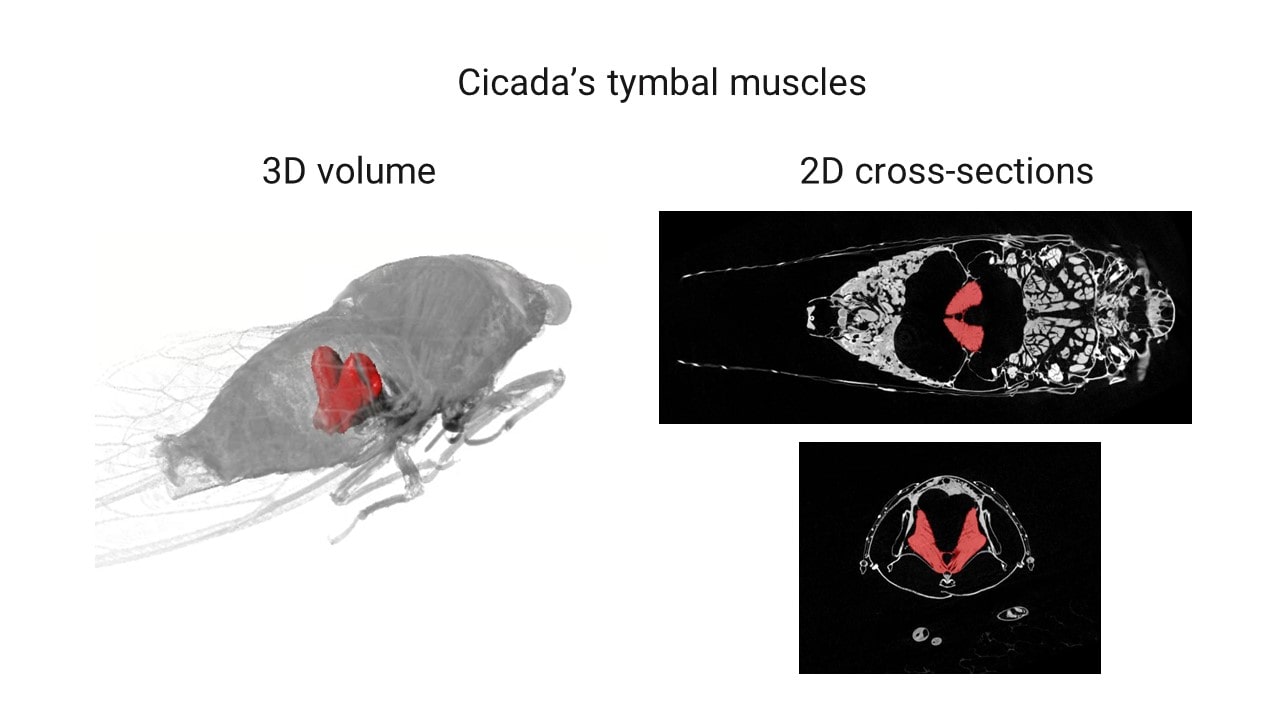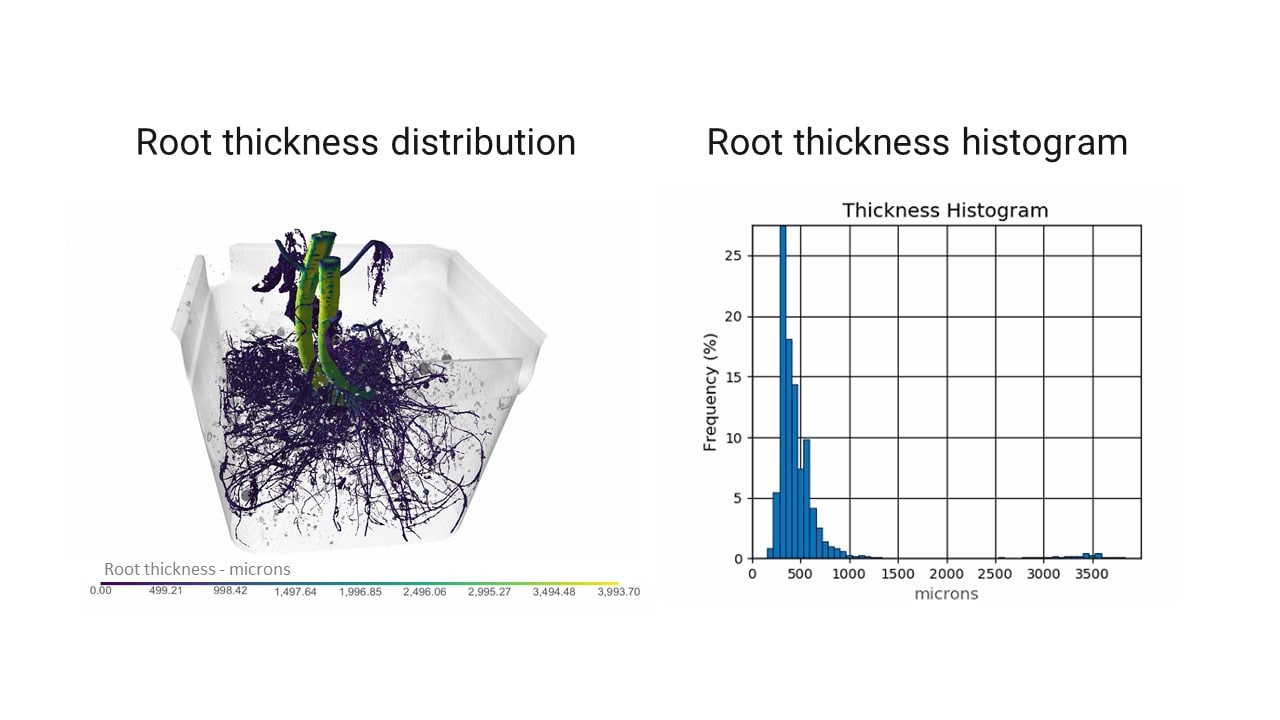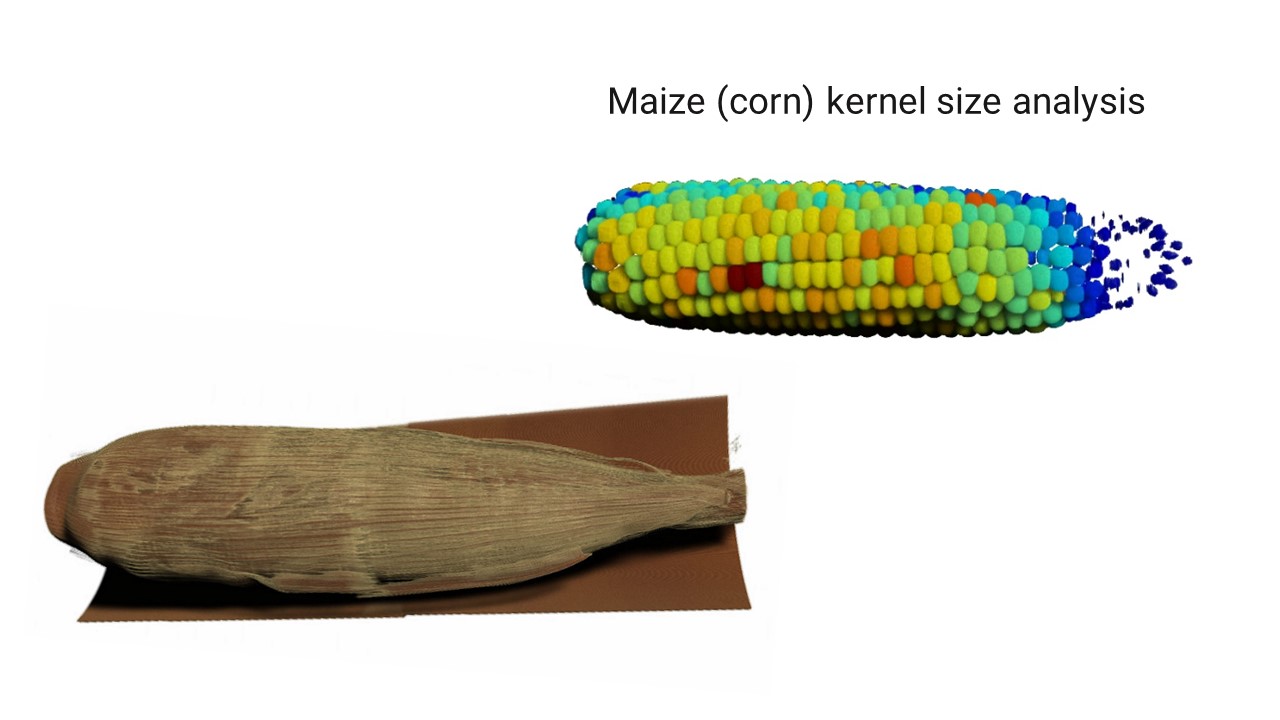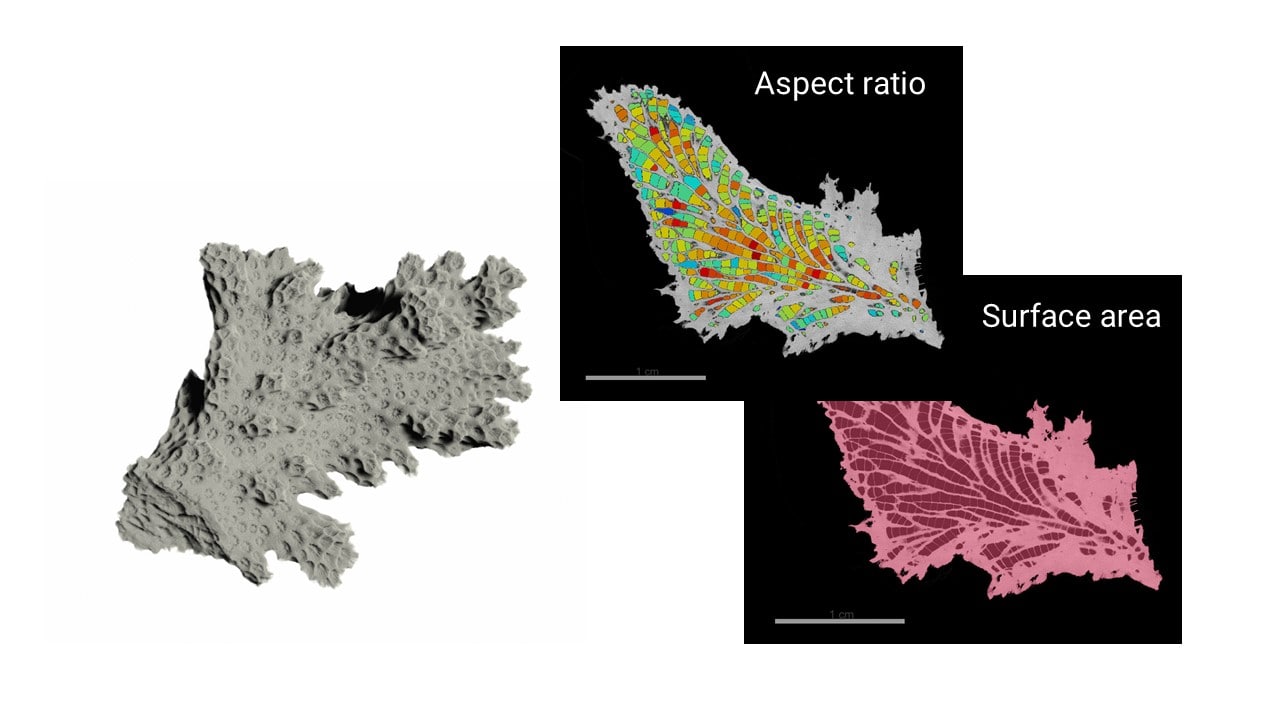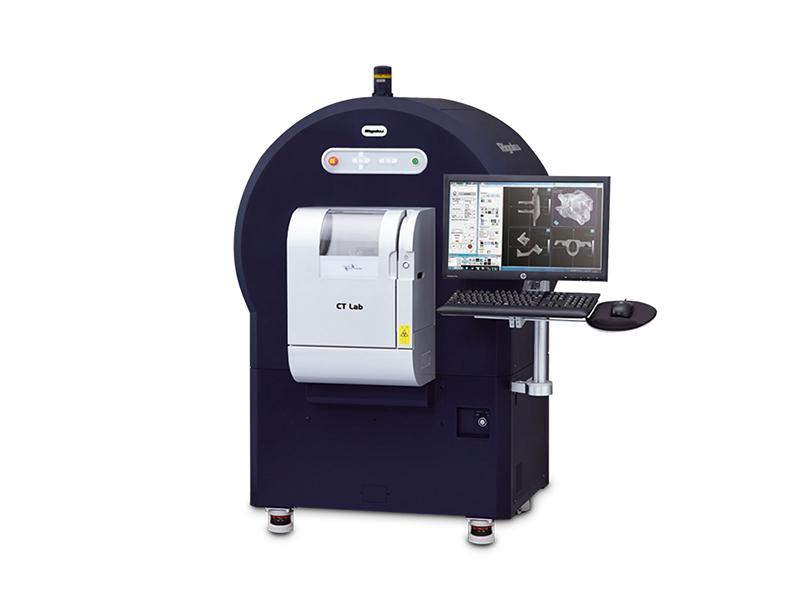MAIZE KERNEL ANALYSIS
About the sample: Maize
Maize (a.k.a. corn) is one of the most important dietary staples globally. Not only is maize an important crop for food consumption, but it is also used for ethanol and biofuel production, animal feed, and other products. By characterizing maize, we can better understand crop yield under different environmental conditions and facilitate better plant breeding programs to improve yields. X-ray CT (computed tomography) is a powerful tool for characterizing maize plants. Moreover, X-ray CT can reveal the internal structures of plants non-destructively.
Analysis procedure
- In this example, a fully grown ear of maize was scanned using a gantry geometry micro-CT scanner, CT Lab GX.
- The CT image was segmented into five phases using the deep learning segmentation technique. Then, watershed transform was used for object separation of maize kernels.
- The volume distribution was calculated for the maize kernels.
1. CT scan
An ear of fully grown maize was scanned to produce the 3D grayscale CT image. A 3D cross-section shows kernels, outside silk and husk as well as the internal pith structure.
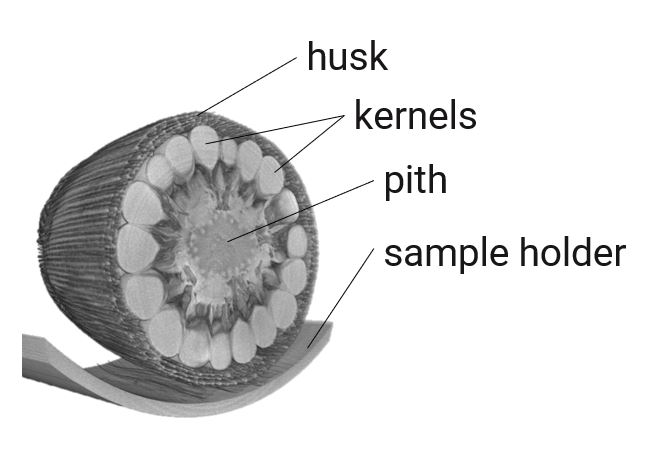
2. Image segmentation
Deep learning segmentation was used to segment the maize ear into a husk, kernels, pith, sample holder, and air. Then, kernels were separated using the watershed transform method.

3. Kernel size analysis
Kernel volumes were calculated to allow a volume distribution analysis. The average kernel volume was 96.97 mm3. A volume distribution histogram with a color-coding overlay on the separated kernels is shown.
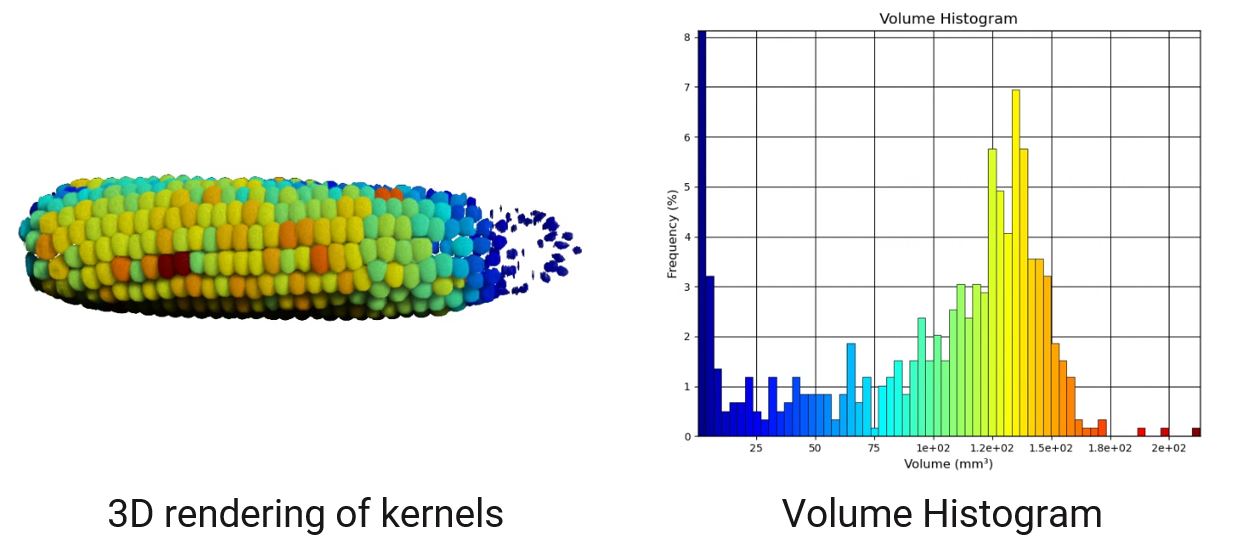
More Life Science Application Examples
Watch an on-demand webinar about X-ray CT Plant Science applications.
Watch an on-demand webinar about X-ray CT Life Science applications.


